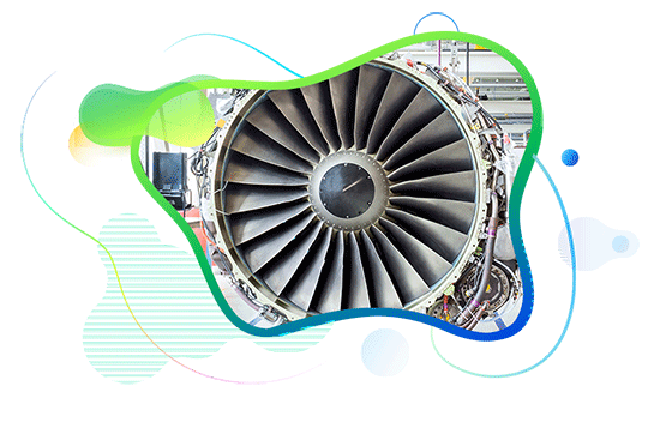Fast Track your MRO Operations
Published :
“If you always do what you always did, you’ll always get what you always got” - Henry Ford
In other words, when you are looking for a different outcome, think about what difference you can do by endorsing change. Often we think about the details, we look at the activity we are involved with and try to find a better way of being more efficient. An efficient business process can be achieved by an organization by endorsing change.
Business Process is an important yardstick for not only assessing company’s growth but also to set a right trajectory for the work flow in the organization.
One key concept that aids an effective business process is “Straight-Through Processing (STP)”. STP is an initiative used by companies to optimize and improve the speed at which transactions are processed. This is achieved by automating the process of information exchange electronically without having to manually re-enter the same piece of information repeatedly over time.
One of the industries where STP is used is in the financial systems of an organization where payment, contract or settlements have to be made on a fast track mode. STP enables the entire trade process for capital market and payment transactions to be conducted electronically without the need for re-keying or manual intervention, subject to legal and regulatory restrictions. The concept has also been transferred into other sectors including energy (oil, gas) trading and banking, financial planning and Transportation.
Aviation Sector has always been unique in following a standard process, but automation and accuracy being the need of the hour, more and more Airlines and MROs are adapting processes like STP for enhanced workforce and enterprise efficiency. In addition to compliance with the standard aviation practices, MRO IT functionalities today are also expected to follow STP.
An example of STP in Aviation is parts repair processing. A repair order process for an aircraft part involves the following steps:
These steps usually involve many role changes, lot of document movements & more number of transactions. Ramco Aviation suite adopts Straight-Through Processing (STP) to optimize and improve the speed at which transactions are processed. Ramco Aviation widely caters to Airline, Heli Operator, MRO and Business Aviation segments.
With the help of STP incorporation into Repair order process, the following steps will be automated:
In other words, STP looks at various parameters such as the previous document data, master entity attributes, STP configuration rules, related document states/data and then intelligently automates the documentation process.
Benefits of STP
Typically, products and practitioners make the mistake of focusing on user interface layer for usability. In enterprise products space, real usability gains can be made by focusing on process simplicity. STP promotes usability by ensuring that the actor to system contact is kept to the barest minimum and managed in the most efficient manner; this in turn helps customers achieve higher accuracy, faster turnaround time across departments. Other important examples include processes like Aircraft Induction, Part Setup and Aircraft / Component Maintenance.
Enterprise asset management (EAM) involves the management of mission critical assets of an organization throughout each asset's lifecycle. EAM is used to plan, optimize, execute, and track the needed maintenance activities with the associated priorities, skills, materials, tools, and information. The aim is to optimize the quality and utilization of assets throughout their lifecycle, increase productive uptime and reduce operational costs.
Enterprise asset management (EAM) involves the management of the maintenance of physical assets of an organization throughout each asset's lifecycle. EAM is used to plan, optimize, execute, and track the needed maintenance activities with the associated priorities, skills, materials, tools, and information.
The software helps in effective maintenance of assets through preventive, predictive, shutdown and breakdown maintenance strategies. The system also helps enterprises mitigate equipment risks by enhanced safety standards. The streamlined operations and improved asset performance helps organizations increase their investment effectiveness.
EAM is important because it helps organizations track, assess, manage and optimize asset quality and reliability. Asset intensive Organizations have hundreds, thousands, even millions of assets which needs to be maintained to maximize / optimize life of these assets to increase the return on investment.
The key features of effective EAM are:
Asset Intensive companies under the following Industries :
Contact us for a meeting and schedule a demo
This differs on case to case basis, based on the type of installation and unique industry specific requirements. Contact us for a meeting and schedule a demo.
This differs on case to case basis, based on the type of installation and unique industry specific requirements. Contact us for a meeting and schedule a demo.
Stay Connected, follow us on LinkedIn / Twitter to know more about EAM Software latest trends.

All Rights Reserved. © Copyright 2024. Ramco Systems.